Marcia Thornton Jones's Blog, page 4
July 28, 2025
The Case for Perfection, and Not-So-Perfect
by Charlotte Bennardo
 Photo by Arndt-Peter Bergfeld: https://www.pexels.com/photo/close-up...
Photo by Arndt-Peter Bergfeld: https://www.pexels.com/photo/close-up...I used to be a big fan of home design shows, especially the early ones that were aimed at people with limited budgets (Anyone remember Design on a Dime?). One concept I remember is never to be too symmetrical; don't have an even number of things, like candlesticks. It was always 'use an odd number' because the feeling was that symmetry was too... predictable. Boring. Static.
I can understand that. Too much matchy-matchy leads the eye away.
But...
Home design is vastly different from the design of our world, our universe. There, asymmetry (no two snowflakes are alike), blends and complements symmetry (like the nautilus shell). Sometimes you need symmetry, like in buildings and healthy skin cells, and sometimes, asymmetry is better, like in art or Calico cat markings.
Each has its place, its function, and its beauty.
Charlotte writes MG, YA, NA, and adult novels in sci fi, fantasy, contemporary, paranormal and romance genres. Her latest YA fantasy novel, The Excalibur Vow, just released. She is the author of the award-winning middle grade Evolution Revolution trilogy, Simple Machines, Simple Plans, and Simple Lessons. She co-authored the YA novels Blonde OPS, Sirenz, and Sirenz Back in Fashion. She has several short stories in various anthologies. Having finished her MFA, she's applying what she learned and is working on several children's and adult novels, and other short stories. She lives in NJ with her family and floofy cat Mink, a squirrel who insists on digging up my geraniums, and a visiting pet rabbit, Bad Bunny.
July 24, 2025
Endings I Love (Holly Schindler)
My favorite ending? It's the full-circle moment. Winding up in the exact same place the story began, only completely different.

Sometimes, I think it's why it's so much fun to go back to old stomping grounds, old hometowns. Not necessarily to see the changes in the place. It's more important, I think, to see the changes in ourselves.
Maybe that's why I like the full-circle plotlines, too. Not so much to see the difference in the character that I have fallen in love with. To see the changes in me, now that I've taken this trip with a group of fantastic characters.
Every single book changes us. Every single read. Just as every writing project changes us. It's nice to take a moment, along the journey, to see the steps we've taken.
~
Holly Schindler is the author of The Junction of Sunshine and Lucky
July 23, 2025
Behind the Thumb: Smack Dab in the Imagination by Dia Calhoun
I've read that what made human beings leap ahead, and distinguished us from other species, was our opposable thumbs and tool making. This is a chicken and the egg problem--which came first? I want to know how imagination and the thumb/hand developed in relationship to each other--what drove what? And even in posing the question that way, I hear my left brain leading. My right brain says wait, no, this relationship between the hand and imagination was a dance where sometimes one led and sometimes the other.
Anyone who creates anything knows this is how the best work is done.
July 15, 2025
A Book Group for Writers!
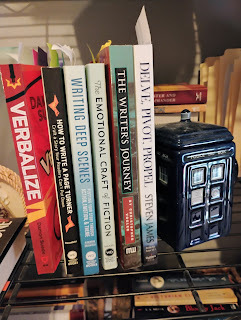
Recently I participated in a book club, hosted by Lorin Oberwegerand Free Expressions, that was as much a writing group as it was a readinggroup. It proved inspirational andinformative as any MFA program. The process followed that first the group read anddiscussed a craft book, in which the author of the book offered furtherinsights into the concepts as well as guided writing exercises. At the nextmeeting, group members applied these concepts to a work of fiction, in whichthe author also presented further insights into their writing process.
Below I review some of my favorite craft books, most of whichI had not read before. I’ve not included any of the fiction in lieu of space. (Albeit,a couple of my favorites include Henry Neff’s Witchstone and Nina Simon’sMother-Daughter Murder Night). The key here is to learn how to deep dive intothese concepts, apply them to your current read, and by extension, your currentWIP.
How to Write a Page Turner: Craft a Story Your Readers Can’tPut Down (Jordan Rosenfield, 2019). According to Rosenfield, a “good story is acreated, stylized and crafted version of reality. And tension, with its elements and tools, areessential to the transformation of the ordinary into the extraordinary. Herbook explores the four building blocks of tension, including danger, conflict,uncertainty and withholding. This is a must read.
Writing Deep Scenes: Plotting Your Story Through Acton,Emotion and Theme (Jordan Rosenfeld, 2015). Albeit not on the reading list, Ienjoyed her discussion on page turners so much, I decided to read this one,too. Rosenfeld defines plot as “the events that take the protagonist from thedarkness of not knowing what is happening to the light of solving the mystery,exposing the killer, or destroying the villain.” The plot serves to “transportthe character from the chaos of the unknown in the beginning of the stry,through the twists and turns of the middle, and all the way to an unexpectedoutcome at the end.”
With this in mind, Rosenfeld identifies three distinctplotlines included in every good story, and her book takes a deep dive into howeach of these movements play out in every pivotal scene:
1. Action is physical and concrete.
2. Emotion is moving and sensory.
3. Theme is cerebral and abstract.
Delve, Pivot, Propel: 350 Writing Secrets to Elevate YourStorytelling and Transform Your Novel (Steven James, 2024). At its essence, this book takes a deep diveinto those characteristics that define the causal chain, i.e. the spine of thenarrative arc. James offers a very easy-to-follow question and answer format, whichincludes practical tips and charts, that demonstrate how stories aren’t justabout action (want) but about desire-infused pursuit (need). The core of thestory is intimately tied to some unmet desire – whether it’s for somethingtangible (the fabled pot of gold), a new identity (self-confidence), an ideal(justice), or an individual (love). Iparticularly appreciated his discussion on creating dimensional characters and formidablevillains. Another question I appreciated in his collection, how can you tellwhen you’re done revising your story, and a related question, how many drafts shouldI write?
The Emotional Craft of Fiction: How to Write the StoryBeneath the Surface (Donald Maass, 2016). This is another must have. My copy isfull of notes and highlights from Maass’ discussion as well as notes how toapply to my own writing. If fiction can be defined as an emotional exchange,then the language of emotion makes a difference to the readers’ experience. Assuch, plot can also be defined as a sequence of emotional milestones. Maassdelves into the three primary paths that produce an emotional response. SaysMaass,
“Human action is also driven by need. That need is sensed in subtext andrevealed through what people say and do. That in turn should stir our ownimaginations and churn up our feelings, shouldn’t it?”
Verbalize: Bring Stories to Life and Life to Stories (DamonSuede, 2017). Our next meeting features this gem of a book. Says Suede, “nobodybuilding a house starts by polishing door knobs.) Characters are the powersource of all stories. In other words,characters drive the plot, while the plot molds the character.
In the end, an important take away from this book group:There are no rules, only guidelines. There are many strategies available thathelps the story-engineering process. What works for one may not necessarily workfor another. But despite the varied paths each strategyrepresents, ultimately every read – without exception – comes to the same conclusion: What makes a good story.
For more information about this book group and other excellent webinars, contact Free Expressions at the link above!
Happy reading and writing!
-- Bobbi
July 12, 2025
Book Review: NATIONAL PARK MYSTERY SERIES by Aaron Johnson
What better time than summer - with it's free time to explore and discover more about our beautiful country - than to celebrate our NATIONAL PARKS. This book series does just that while taking kids on adventures in the process.
NATIONAL PARK MYSTERY SERIES BOOKS 1-5 by Aaron Johnson
HIDDEN CLUES. SECRET CODES. REAL LOCATIONS. These are thetag words for this action-packed, kid friendly middle grade series of books setin various National Park locations throughout the US. Friends Jake, Wes, andAmber follow clues left in Jake’s grandfather’s journal as they try to recoverlost treasures during their summer vacation with their families. This popularseries is the perfect summer vacation read for kids who love adventure.
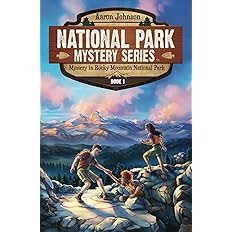
I read the first two books in the series:
Mystery in Rocky Mountain National Park & Discovery in Great Sand Dunes National Park.
I highly recommend these popular books for any kid who loves puzzles, codes, mysteries, and adventure.
Other titles in the series feature the Grand Canyon, Yosemite, and Zion National Parks.
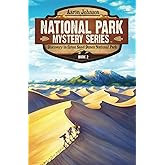
Darlene Beck Jacobson has visited Rocky Mountain National Park as well as many other beautiful places in the US. Her favorite thing to do in parks is to takes photos of wildlife and heart-shaped things found in nature. Or to sit on a fallen log and open a book.

July 11, 2025
Suspense in the Middle

The catchword this month: symmetry.
A most symmetrical structure: The Gateway Arch in St. Louis.
It stands 360 feet from ground to apex.
It stands 360 feet from ground to sea level.
The legs it stands on are 360 feet apart.
Interesting, absolutely. But now, to tie this into my current work-in-progress, a mystery that happens to have ghosts.
Although the story currently stands on two solid legs – the beginning and the ending – the middle is still a big question mark. In theory, it should work but, in my mind and on a MUCH smaller scale, it’s like I’m plummeting toward the moment below; this from City-Smart Guidebook: St. Louis (1998, Avalon Travel Publishers) by Jody Feldman (yep, that’s me, too).
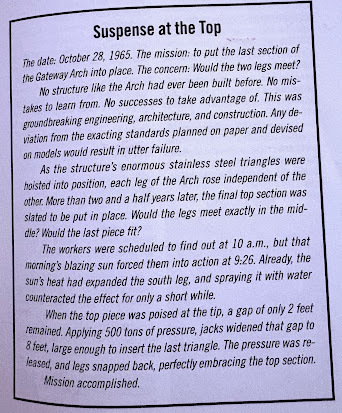 In a nutshell, the engineers were not certain that the two legs would meet in the middle.
In a nutshell, the engineers were not certain that the two legs would meet in the middle.The big questions I’m facing right now:
Will my solid beginning and ending align with the suspense I’ve planned for the middle?
Will I have to adjust and readjust and, figuratively, hose it down?
Will it forever be the big idea that didn’t work or will it stand as a proud monument in my body of work?
To be continued...
Yes, Jody Feldman did write other things before she turned to kidlit. And she’s hoping that this current WIP will be as warmly received in the MG book world as were The Seventh Level and The Gollywhopper Games series. Plus...
a bonus photo of how things stand in Jody's story.
P.S. Check out her new website!

July 8, 2025
Fearful Symmetry -- by Jane Kelley
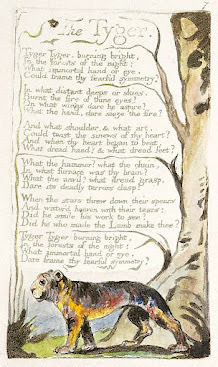 When we were asked to blog about Symmetry, I thought of this poem by William Blake. (The image above is a copy of Blake's original printing of The Tyger from 1794.) I knew of the poem. I hadn't really thought about what it meant.
When we were asked to blog about Symmetry, I thought of this poem by William Blake. (The image above is a copy of Blake's original printing of The Tyger from 1794.) I knew of the poem. I hadn't really thought about what it meant. Tyger Tyger, burning bright,
In the forests of the night;
What immortal hand or eye,
Could frame thy fearful symmetry?
In what distant deeps or skies.
Burnt the fire of thine eyes?
On what wings dare he aspire?
What the hand, dare seize the fire?
And what shoulder, & what art,
Could twist the sinews of thy heart?
And when thy heart began to beat.
What dread hand? & what dread feet?
What the hammer? what the chain,
In what furnace was thy brain?
What the anvil? what dread grasp.
Dare its deadly terrors clasp?
When the stars threw down their spears
And water'd heaven with their tears:
Did he smile his work to see?
Did he who made the Lamb make thee?
Tyger Tyger burning bright,
In the forests of the night:
What immortal hand or eye,
Dare frame thy fearful symmetry?
What immortal hand? The young me thought that an immortal hand or eye had to belong to a Supreme Being. As I got closer to the end of my own mortality -- I started hoping that creating could make us immortal.
So, yay, authors -- right?
Not so fast. The poem has its own symmetry. The last stanza almost mirrors the first. Only this time the question isn't who could create but rather who dares to create.
What the hammer? What the furnace? What dread grasp dares to clasp? What the hand dare seize the fire?
So, look out, authors -- right?
Creating is powerful stuff. Especially if you're bringing to life a tiger with fiery eyes, lurking in the dark forest.
And why is symmetry fearful? Let me know if you have thoughts about that. I'm still pondering.
Jane Kelley is the author of many middle grade novels. None contain any actual tigers -- just ordinary predators like hawks, cats, and an occasional bully.
July 3, 2025
How to Write a Companion Novel
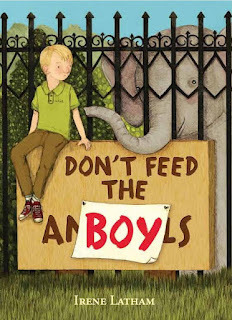
This summer I am working on a companion novel to a middle grade book I wrote years ago: Don't Feed the Boy by Irene Latham, illustrations by Stephanie Graegin (Roaring Brook Press, 2012), about a boy named Whit who lives at a fictional zoo in central Alabama...and wants to escape.
The other primary character in that book—and a major change-agent for Whit's life—is a girl named Stella, whom Whit calls “The Bird Girl” because Stella comes every day to the zoo to draw the birds. She's also trying to “escape” a difficult family situation, and in each other, the kids find friendship and inspiration.
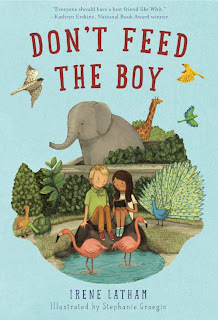 And so, now I am discovering what happens to Stella at the close of Whit's story, and I'm loving it!
And so, now I am discovering what happens to Stella at the close of Whit's story, and I'm loving it!I am also discovering some things about writing companion novels.
They shouldn't be the same story as the original novel. A LOT needs to be different. But not TOO different. For instance, I love The Hunger Games franchise and have enjoyed every story. The latest Sunrise on the Reaping, goes back in time to tell us how Haymitch got involved in the Games. I loved learning his back story, but I found myself skimming the chapters that chronicle the Game itself: been there, done that!
It's super-fun for the reader to find mentions of things they know from the original book, but the companion book shouldn't be dependent upon these things. Each book should be able to stand alone.
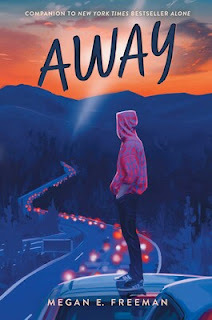 Another companion book I read recently was
Away
by Megan E. Freeman, a companion to Alone. In this one, we get an explanation for the mysterious “what caused the evacuation?” question that hovers over the original novel. And we get an adventure completely different from the first novel, but also reminiscent of it. That's essentially what I'm aiming for in my effort.
Another companion book I read recently was
Away
by Megan E. Freeman, a companion to Alone. In this one, we get an explanation for the mysterious “what caused the evacuation?” question that hovers over the original novel. And we get an adventure completely different from the first novel, but also reminiscent of it. That's essentially what I'm aiming for in my effort.Yes, there will be birds! And lots of new animals to satisfy the animal-lovers who picked up Don't Feed the Boy. I'm also continuing the themes of freedom/recovery/family disease of addiction.
Additionally, we'll explore a whole new setting, new characters, and so on, as Stella has relocated to Mobile, Alabama, by the end of the original novel.
Fun for me, and fun (I hope!) for readers eventually, someday. . .
If you want to learn more about writing companion novels, check out this excellent post.
Meanwhile, I'll be here writing 1,000ish words a day.
July 2, 2025
Middle Grade Reading for July
I've interviewed some amazing middle grade authors on my blog Book Q&As with Deborah Kalb, and I thought I'd share some excerpts about their new books!
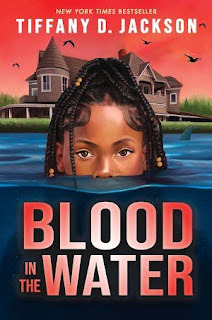
Tiffany D. Jackson's new novel is called Blood in the Water. It's her first MG novel, and when I asked her about the inspiration for the book, she said: "While I was on tour and doing school visits, I’d alwaysnotice a few 9- and 10-year-olds in the crowd, holding a copy of my YAs,excited to ask their questions. My skin would crawl and I’d have to resist thetemptation of snatching the book out of their hands. Even though maturity is subjective (because I was a kid whoread Stephen King at 12), I really wanted to write a story that spoke to them,that took place in their world, specifically. So when the opportunity camearound, I clutched at it. And Blood in the Water was born."
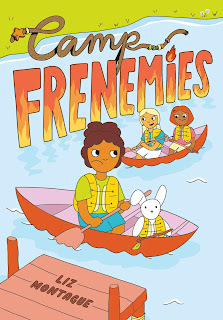 Liz Montague is the author and illustrator of the new graphic novel Camp Frenemies. When I asked what she hoped readers would take away from the book, she said: "I hope that readers are willing to give people more of a chance. Maybesomeone isn’t the worst person ever to exist, maybe you just caught them on abad day or they have things going on that you don’t know anything about. Peopleare complicated and nuanced and I hope exploring these characters helps kids toallow space for that in real life. I also hope they don’t feel as pressured to instantly changeor “grow up” in ways that don’t feel genuine. To this day I still have all myBuild-A-Bears and American Girl Dolls. I keep them on a bookshelf in my officeand I’m really glad I kept them."
Liz Montague is the author and illustrator of the new graphic novel Camp Frenemies. When I asked what she hoped readers would take away from the book, she said: "I hope that readers are willing to give people more of a chance. Maybesomeone isn’t the worst person ever to exist, maybe you just caught them on abad day or they have things going on that you don’t know anything about. Peopleare complicated and nuanced and I hope exploring these characters helps kids toallow space for that in real life. I also hope they don’t feel as pressured to instantly changeor “grow up” in ways that don’t feel genuine. To this day I still have all myBuild-A-Bears and American Girl Dolls. I keep them on a bookshelf in my officeand I’m really glad I kept them."
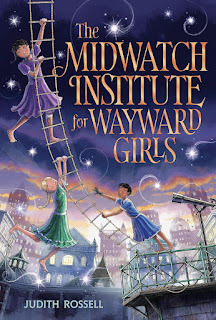 Judith Rossell is the author and illustrator of the new novel The Midwatch Institute for Wayward Girls. She told me: "I wanted to write a story about a team of girls who learn useful skills andthen work together to solve crimes. When I was young, I was a Girl Guide (likea Girl Scout in the US) and we learned bandaging and knot-tying and Morse code,and I felt totally ready to solve crimes or save a baby from bandits, or from arunaway train, or something like that. Unfortunately,I grew up in the suburbs of Melbourne, Australia, and I never got the chance tobe the heroine of any kind of adventure, which was a bit frustrating. So it wasvery satisfying to send the girls of the Midwatch Institute into danger, andsee how brave and smart they could be."
Judith Rossell is the author and illustrator of the new novel The Midwatch Institute for Wayward Girls. She told me: "I wanted to write a story about a team of girls who learn useful skills andthen work together to solve crimes. When I was young, I was a Girl Guide (likea Girl Scout in the US) and we learned bandaging and knot-tying and Morse code,and I felt totally ready to solve crimes or save a baby from bandits, or from arunaway train, or something like that. Unfortunately,I grew up in the suburbs of Melbourne, Australia, and I never got the chance tobe the heroine of any kind of adventure, which was a bit frustrating. So it wasvery satisfying to send the girls of the Midwatch Institute into danger, andsee how brave and smart they could be."Happy reading!
--Deborah Kalb
June 29, 2025
It's Never a Simple Either, Or...
by Charlotte Bennardo
It seems our world is defined by contrasts. Night vs. day. Drought vs. flood. Rich vs. poor. Young vs. old. Good vs. evil.
 Photo by Robin Schreiner: https://www.pexels.com/photo/black-sp...
Photo by Robin Schreiner: https://www.pexels.com/photo/black-sp...But they are absolutes, and if any rule of life is true, it's that there are few absolutes. Night in one part of the world occurs at the same time as day in another, while there are places that are in between the two. Our bodies feel solid, with its bones and muscles, yet we are mostly water. Our laws include "Do Not Kill", yet there are exceptions for war, self-defense, and legal punishment.
In pondering this theme, I tried to think of absolutes. I couldn't find any. Even the laws of physics may now be changing based on what scientists are discovering as we venture farther into space via craft or telescope, like the possibility of not one single universe, but many.
Our characters should be a reflection of this contrast and our own personalities. No one is purely evil or purely good (setting aside any religious aspects). I consider myself a good person, but there have been times when I've been rude, mean, uncaring. I've gotten a speeding ticket. Now look at serial killer BTK. No one will argue that he isn't evil incarnate the way he bound, tortured, and killed people. Yet, he volunteered at his church, was a Boy Scout leader, and cared for his children. Never cheated on his wife. (I read his daughter's memoir, A Serial Killer's Daughter: My Story of Faith, Love, and Overcoming by Kerri Rawson.) To the world at large and his family, he was a good man; yet we now know him for the evil person he truly was.
So characters in our stories, no matter the age, must reflect this dichotomy that is ever present in our lives: we all live with a duality in our nature, good vs. evil. Even Darth Vader had some good in him, as Luke Skywalker tells us. It may be buried deep, forgotten, but it is there. Adding just that bit of light into a character makes them more relatable to us, because we all know (or should know) that we are not perfect and carry our own darkness. I think of ruthless punishments when I hear people abusing children, animals, and vulnerable people; I want the abusers to hurt like what they've done. It's yin and yang.
There is an indigenous story about an elder telling a child about the two wolves that live inside each of us, one evil and dark, the other good and light. The child asks which one is stronger. The elder replies, the one that we feed. We and our characters must choose which one, but there are always the two.
Charlotte writes MG, YA, NA, and adult novels in sci fi, fantasy, contemporary, paranormal and romance genres. Her latest YA fantasy novel, The Excalibur Vow, just released. She is the author of the award-winning middle grade Evolution Revolution trilogy, Simple Machines, Simple Plans, and Simple Lessons. She co-authored the YA novels Blonde OPS, Sirenz, and Sirenz Back in Fashion. She has several short stories in various anthologies. Having finished her MFA, she's applying what she learned and is working on several children's and adult novels, and other short stories. She lives in NJ with her family and floofy cat Mink, a squirrel in the backyard tree, and a visiting pet rabbit Bad Bunny.



